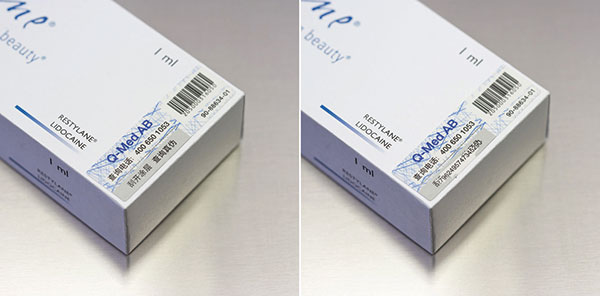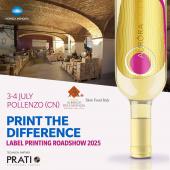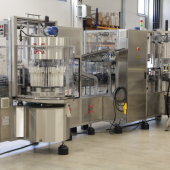Pharma. Anti-counterfeiting and track&Trace
Traceability is set to become a key factor for all operators in the pharmaceutical industry. Some solutions proposed by automatic machine builders to comply with the impending regulations.
The faking of medicinal products is taking on worrying proportions, both in terms of social costs (victims of counterfeit pharmaceutical products are on the increase) and in economic terms. Several factors tell a counterfeit pharmaceutical product apart, starting by the incongruity of the data shown on the packaging or the wrong dosage of the active ingredient, factors that pose serious risks to human health. The United States were the first to move to oppose the pervasive phenomenon, and in 2015 the regulations promulgated by the FDA (Food and Drug Administration) will come into force, that will make the traceability of medicinal and pharmaceutical products marketed on American territory mandatory. Europe, for its part, is working on benchmark standards valid in all EC countries (see box) the imminent adoption of which is called for.

The response of the machine builders
All major automatic machine builders have long mobilized to develop solutions of various types, from turnkey lines to standalone solutions, to meet the different needs in the field of traceability. Some interesting applications were seen during the recent Pharmintech (Bologna, 17th – 19th April).
Neri, a Marchesini group company, presented an example of a full T&T line, comprising a RE 302 rotary labeler and vertical MCPV 850 casepacker-palletiser; both machines are equipped with their own traceability system, which ensures continuous control of products during the entire packaging process. The line is provided with an appropriate camera vision system, installed on the bottle labeler and on the casepacker-palletizer, which enables the monitoring of products from the beginning of the encoding of the single bare bottles up to the palletizing of ready filled and sealed boxes.
The machines operate on a fail-safe logic so as to eliminate all possibility of error.
IMA also offers series of solutions for satisfying T&T needs, including the Sensitive AP400 TE 3T labeler. Developed using the knowhow of the "Life" division, the AP400 applies labels on one, two or three sides of the box (only on the top, on one side or on both), providing a flexible alternative to different needs for combating counterfeiting. The ability to accommodate up to three labeling units is combined with an outstanding performance: the machine runs at 450 strokes/min and integrates seamlessly with other machines in the line. The positive transport of the boxes via the use of toothed belts ensures the correct alignment and positioning of the same, excluding the possibility of jams. At the same time the solution ensures a constant distance between the boxes and the printheads.
Other manufacturers are focused on the development of ad hoc solutions applicable to existing lines. This is the case of MG2, a company specializing in the production of capsule filling machines, but also active in packaging with a wide range of systems for end-of-line. For track&trace MG2 offers three types of solutions: The first involves the printing of serialized codes on the carton with subsequent verification of correctness and quality of the result. The second, which performs the same process, is specifically dedicated to bottles. The third option has been developed for bundles of bottles (but potentially also for cartons), and is equipped with a vision system that reads the code preprinted on the bottle and with a label print and apply unit applying the labels on top of the bundle of bottles. The latter system finds a further extension of use in the secondary packaging phase, using an MG2 casepacker with integrated T&T system that checks the serial number as well as the successful print and application of the label on the case.
These units have been designed to work with commonly used track&trace systems provided by the various software or camera sellers; aboveall designed with compactness and ergonomics in mind, they can even be installed in cramped spaces, typically on pre-existing lines.
Among the main concerns capable of providing solutions in the pharmaceutical sector one also has the German company Romaco (operating in Italy as Romaco Srl based at Pianoro): its machine line-up also includes blister lines that integrate for track&trace solutions, namely the Noack 960 and Noack 930.
These are high performance machines featuring a modern design, great flexibility and modularity (for example they enable a choice between plate or roller sealing).
Among the innovations offered, the "QuickFeed" fast power supply unit installation system, and the "QuickAdjust" device providing rapid adjustment. Regarding traceability, Romaco cooperates with Laetus, company of the Coesia Group, specialized in providing specific T&T solutions.
Vision and marking systems
Laetus’ systems come under three families: identification systems, filling control systems and quality checking systems, which include applications in the T&T field. An example of solution based on a vision system is INSPECT wt, which is set out as a particularly flexible and modular unit.
Through the use of a particularly evolved video camera, INSPECT accurately reads mono and bi-dimensional codes, rating parameters such as print quality. Applications can range from the analysis of a box with mixed content (vials, syringes ...), to the inspection of the alignment of a label, up to the verification of barcode, Datamatrix and T&T codes. As well as single units, the company provides control systems for complete lines, with specific T&T applications.
Such systems are based on the use of an Argus wt server, which interacts with the machine controls. It comes with a product database and a monitoring and supervising interface of the various phases of the line operation via an immediate and userfriendly control software. The T&T dedicated S-TTS system is versatile and modular; starting from the PrintSpect for printing and verification of serial numbers, up until the complete multi-level aggregation, going by way of the management of the shipment in storage as well as corporate data and, lastly, the interfacing with the company Enterprise system and the dialoguing with the databases of the various governmental world health agencies.
Another critical component in the track&trace systems is the code printing system. One of the benchmarks for the design and marketing of these units is provided by the company Nimax, specialized in marking and coding systems using laser technology and high and low resolution inkjet printers. Nimax offers a wide range of printers, starting with the contactless drip deflected A Series, ideal for a hi-speed marking even on multiple lines. The specific solution devised for pharma is in turn based on the Thermal Inkjet G i-tech series of printers, which enable the printing of barcodes, Datamatrix, Truetype texts in a maximum area of 5.1 cm in up to 600 dpi, using waterbased or ethanol based fast drying inks. The V series also meets the needs of the pharmaceutical sector (but can also be used for chemicals, cosmetics, petfood and food - including fruit and vegetables). It comprises a series of HD units (300dpi) printing on flexible films of various types, suitable for high throughputs and capable of reducing line stop times.
|
Counterfeit pharmaceutical products: the position of the EC Europe is an area heavily affected by the phenomenon of the importation and sale of counterfeit pharmaceutical products, one only needs to consider that, over the last five years, the authorities have seized more than 40 million fake pharmaceutical products about to be placed on the market within the EC’s borders. This is why the ESM (European Stakeholder Model) has been set up, an organization that brings together different actors involved in the supply chain of the pharmaceutical market. Its purpose is to assist the EU in choosing and applying a secure and efficient system, this also in terms of costs. Some important steps have already been taken: in 2011 in fact a Falsified Medicines Directive (FMD) was issued, which requires pharmaceutical companies to adopt appropriate measures to ensure the safeguarding of pharmaceutical products, as well as to verify the authenticity and enable traceability of the same. To this very purpose the EU established an ad hoc committee between November 2011 and April 2012, which identified a number of measures to ensure the traceability of pharmaceutical products. These include the application of a 2D Datamatrix code on medicinal packaging, itself comprised of at least 4 basic elements: a producer concern product identification-, serial and lot number as well as expiration date. The year 2017 has been established as the deadline for the coming into force of a legislation shared by all EU member states. In practice, this means that the need for pharmaceutical companies to start implementing the upgrade of their lines is beckoning. |
By Riccardo Ceredi

















